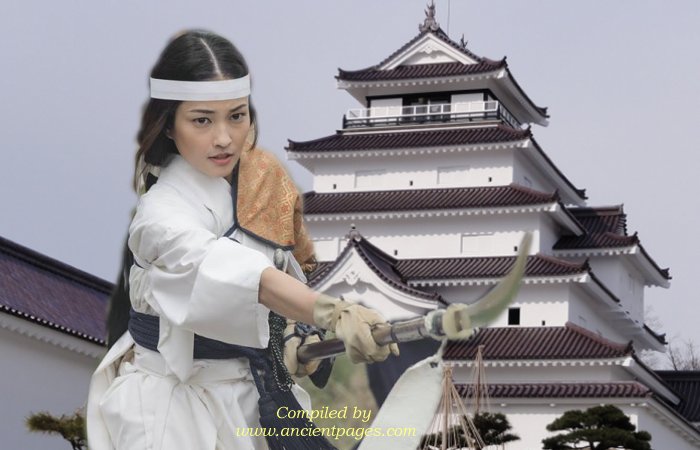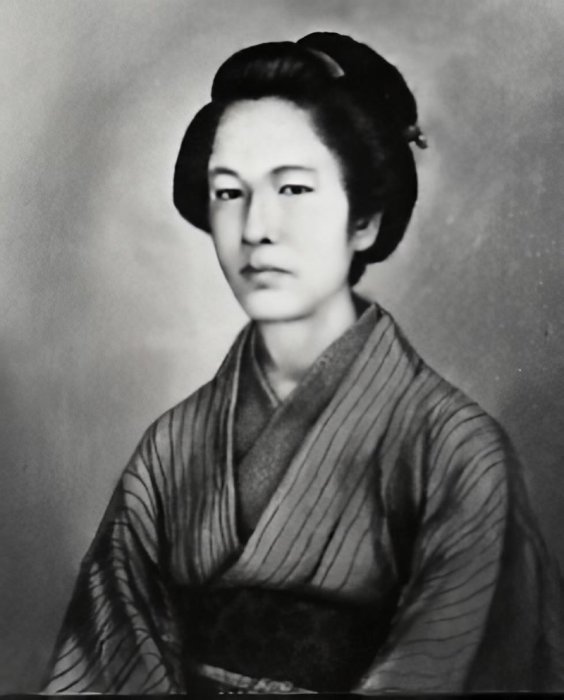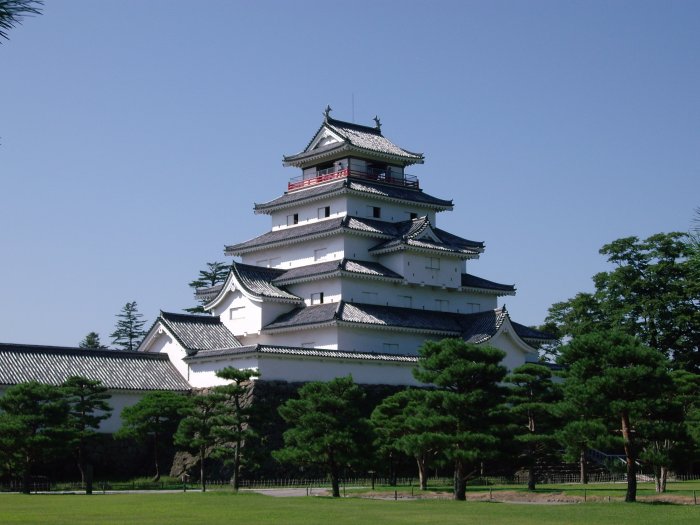Ellen Lloyd – AncientPages.com – Nakano Takeko had a choice. She could marry or die in battle. She chose the latter.
Having the heart and spirit of a true female Samurai, Nakano Takeko was determined not to be taken alive by the enemy. She led her Samurai women straight into the fire of the imperial army’s modern rifles. She wielded her naginata like a true martial arts master, but how can a sword fight a rifle bullet.

When she understood the end was inevitable, she asked her sister for one last favor. It was a horrible act few siblings could commit, but Takeko’s sister knew this had to be done no matter how hard it was. Nakano Takeko was braver than many of the men who fought along with her. Yet, despite her tremendous courage, her death poem reveals how modest this heroic female Samurai was until the end.
Nakano Takeko’s Short And Tragic Life
Nakano Taketo was born in 1847, and her mother and father were from Aizu, but she grew up in Edo, where she started training martial art at the age of 6 years. As a young girl, she was adopted by a master swordsman named Akaoka Daisuke, and though she received education in literature, it was her battle skills that made her famous. Her use of the naginata, one of the several traditionally made Japanese weapons that appear in the form of a polearm, was so outstanding and impressive that she worked as an instructor for some years.
One should keep in mind that martial arts training for women was definitely not uncommon in feudal Japan.
From antiquity to the 17th century, some women became famous for their extraordinary bravery, despite the feudal social system in Japan.
For many centuries there was a tradition of training war women who could defend themselves in the event of an attack in the absence of their Samurai husbands or brothers at home or their violent death during the constant military encounters. Therefore, in the extremely, brutal and dangerous real life in Japan at that time, women of the Samurai class were highly trained in the martial arts to prepare them for emergencies.
Born in a Samurai family, it was only natural for Nakano Takeko to practice martial arts many hours daily.
Nakano Takeko Refused Marriage And Chose Loyalty And Death
When her martial arts teacher Akaoka Daisuke wanted to marry her to a relative of his, Nakano Takeko left and returned to her biological parents. Refusing marriage was an insult to the man, but she was a determined woman who had other plans than spending her life as a wife and future mother.
Nakano Takeko lived when Japan plunged into a civil war between two factions, the ruling Tokugawa shogunate and those seeking to return political power to the imperial court.
“The Aizu clan, a branch of the Tokugawa from around the city of Aizu-Wakamatsu in present day Fukushima Preference, preferred extinction to an Imperial Restoration at the expense of the Tokugawa Shogunate.” 1

Portrait of Nakano Takeko (April 1847 – 16 October 1868) from Hokaiji Temple. Credit: Public Domain
The result was the Boshin War fought from 1868 to 1869. “Despite the shogun’s capitulation, Aizu’s leader, Katamori, continued to resist the ‘new order’; for his efforts, the Meiji government declared him to an enemy of the state and ordered his execution.” 2
Samurai Matsudaira Katamori, the 9th daimyō of the Aizu Domain and the Kyoto Shugoshoku had no intentions of surrendering, and he called his warriors to fight until death.
One of them was the young woman, Takeko Nakano, who led a group of other women taking part in the civil war to restore the real power of the Emperor. Before the Great Battle of Aizu, she decorated her weapon with a death poem wrapped around the shank of her naginata.
According to Stephen Turnbull, “the involvement by women in the siege of Aizu-Wakamatsu Castle in 1868 provides one of the most remarkable and authentic instances of women warriors in the whole of Japanese history.
Motivated by intense loyalty to their pro-shogunate daimyo, and with a genuine belief that defeat at the hands of the Satsuma-Choshu forces would mean certain death, women such as Nakano Takeko fought alongside their menfolk and often exceeded them in daring.
Nakano Takeko led a sortie by women of the so-called Joshigun unit, who charged into the fire of the imperial army’s modern rifles wielding only their naginata and swords. When the imperial troops realized that they were facing women the cry went up to take them alive, but holding their fire meant that the women were soon upon them. Nakano Takeko killed five or six men with her naginata before being sH๏τ ᴅᴇᴀᴅ.
Her sister Masako then cut off Takeko’s head so that it would not be taken as a trophy, and the severed head was safely taken back to a local temple.” 3
The Samurai women defended the Aizu-Wakamatsu Castle with courage beyond average. They were willing to kill their family members than letting them being captured.
“Kawahara Asako, the wife of the magistrate Zenzaemon, cut off her hair and decapitated her mother-in-law and daughter before seeking death in battle, naginata in hand, and drenched in blood.
In this she was initially unsuccessful, because she was swept back inside the castle’s walls by a wave of retreating Aizu warriors.
The name Joshigun was later to be given to the platoon of up to 30 samurai women who fought alongside the men in the defence of Aizu-Wakamatsu Castle when the imperialists imperialists broke in.” 3
The death poem written by Nakano Takeko shows how modest this young Japanese girl was.
In Japanese:
Mononofu no
Tateki kokoro ni kurabureba
kazu nimo iranu
wagami nagaramo
English translation: I would not dare to count myself among all the famous warriors – even though I share the same brave heart.
As followers of the Bushido Code, a centuries-old unwritten code for ideal Samurai warrior, female Samurai had to die and not being captured by the enemy. Many wives of the Samurai committed a suicide ritual known as Jigai, a feminine counterpart of Seppuku.

Aizu-Wakamatsu Castle. Credit: Military wikia
Nakano Takeko is today a celebrated female Samurai and often compared to Tomoe Gozen, whose bravery and strength represented a true female Samurai.
Despite dying in 1868 being only 21-year-old, her short lifespan has not diminished her historical importance. Her courageous acts are celebrated every year during the Aizu Autumn Festival when young girls dressed in hakama (pleated skirt) and white headbands join the procession as a reminder of the sacrifice of the Jousнιтai women.
The tomb and a monument in her memory are located at the Hokai Temple in the city of Aizubange, in the western part of Fukushima County.
Written by Ellen Lloyd – AncientPages.com
Copyright © AncientPages.com All rights reserved. This material may not be published, broadcast, rewritten or redistributed in whole or part without the express written permission of AncientPages.com
Expand for references
- The Japan Times – Women warriors of Japan
- Wright, Diana E. “Female Combatants and Japan’s Meiji Restoration: The Case of Aizu.” War in History8, no. 4 (2001): 396-417.
- Turnbull Stephen – Samurai Women 1184–1877 (Warrior)





